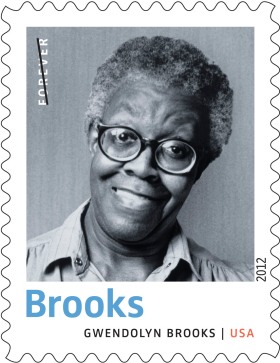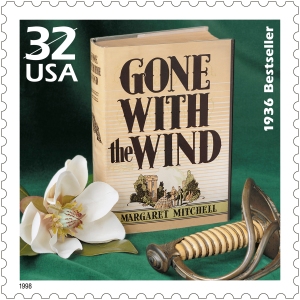 Gwendolyn Brooks is best remembered for distinctive, lyrical portraits of everyday urban life. Her poems combine traditional forms—such as the sonnet and ballad—with experimental free verse, jazz and blues poetry, and colloquial language. A committed voice against sexual and racial oppression, Brooks, who determinedly described herself as Black, was the first Black American to win the Pulitzer Prize.
Gwendolyn Brooks is best remembered for distinctive, lyrical portraits of everyday urban life. Her poems combine traditional forms—such as the sonnet and ballad—with experimental free verse, jazz and blues poetry, and colloquial language. A committed voice against sexual and racial oppression, Brooks, who determinedly described herself as Black, was the first Black American to win the Pulitzer Prize.
Brooks was born on June 7, 1917, in Topeka, Kansas, and grew up in Chicago, Illinois. A shy and reticent girl, she poured her emotions and experiences into poetry, which she began writing before age ten. In 1930, she published her first poem, and she continued to publish throughout her teens and into her twenties. By the mid-1940s, Brooks’s poetry had begun to win awards and critical recognition.
Brooks found much of the inspiration for her first collection, A Street in Bronzeville (1945), in the sights and sounds of her own neighborhood. “We wonder. But not well! not for a minute! / Since Number Five is out of the bathroom now, / We think of lukewarm water, hope to get in it,” she writes in “kitchenette building.” Once characteristic of Chicago’s South Side, kitchenettes were small apartments housing several families who shared one bathroom. In these cramped, crowded spaces, dreams and ambitions had to compete with “onion fumes” and “yesterday’s garbage ripening in the hall.” Yet among the poverty and struggle of daily living, beauty and love persisted. “It was quite a time for loving. It was midnight. It was May,” writes Brooks in “the old-marrieds.” “But in the crowding darkness not a word did they say.”
Brooks was especially attuned to the circumscribed, sometimes luminous lives of Black women. For her Pulitzer Prize-winning collection Annie Allen (1949), Brooks focused on just one woman and followed her life from birth to adulthood. At the heart of the collection is “The Anniad,” an elaborate and lengthy piece about Annie’s marriage and disillusionment as dreams give way to reality. Even as “the culprit magics fade,” however, Annie finds pleasure in the world around her: “Hugging old and Sunday sun / Kissing in her kitchenette / The minuets of memory.”
From the beginning of her career, Brooks demonstrated a controlled mastery of traditional poetic structures such as the sonnet, ballad, and epic, yet she never felt constrained by them. Arguably her most famous poem, “We Real Cool” elevates the short lyric to a new level of conciseness while also infusing the verse with a contemporary swinging rhythm:
We real cool. We
Left school. We
Lurk late. We
Strike straight. We
Sing sin. We
Thin gin. We
Jazz June. We
Die soon.
Brooks frequently experimented with rhyme and meter, playing with both conventional and unconventional forms, and even invented a new hybrid form, the “sonnet-ballad.”
Perhaps best known for her poems about the intimate experiences and emotions of individuals, Brooks also addressed national and international issues. “Gay Chaps at the Bar,” a sequence of 12 sonnets, was based on letters Brooks received from Black soldiers serving in World War II. “The Chicago Defender Sends a Man to Little Rock” considers the struggle to desegregate the nation’s public schools.
Published in 1968, In the Mecca was nominated for the National Book Award. The collection included the monumental “In the Mecca,” in which the faded grandeur of the decaying Mecca building mirrors the condition of many Blacks at the time.
Notecard Set (click to order)
In addition to numerous honorary degrees, Brooks received a lifetime achievement award from the National Endowment for the Arts. She served as Consultant in Poetry to the Library of Congress (the position later renamed Poet Laureate) from 1985 to 1986 and as Poet Laureate of Illinois from 1968 until her death. In addition to poetry, she published two unconventional autobiographies, Report from Part One (1972) and Report from Part Two (1996). The semi-autobiographical Maud Martha, her only novel, was published in 1953.
Gwendolyn Brooks is one of ten poets featured on the Twentieth-Century Poets pane. The stamps will be issued on April 21 in Los Angeles, California, but you can preorder them today!
 The Twentieth-Century Poets stamps are available for sale as a pane of 20 stamps or block of ten stamps. Ten stamps—one of each poet—are also included with .
The Twentieth-Century Poets stamps are available for sale as a pane of 20 stamps or block of ten stamps. Ten stamps—one of each poet—are also included with .





 Gwendolyn Brooks is best remembered for distinctive, lyrical portraits of everyday urban life. Her poems combine traditional forms—such as the sonnet and ballad—with experimental free verse, jazz and blues poetry, and colloquial language. A committed voice against sexual and racial oppression, Brooks, who determinedly described herself as Black, was the first Black American to win the Pulitzer Prize.
Gwendolyn Brooks is best remembered for distinctive, lyrical portraits of everyday urban life. Her poems combine traditional forms—such as the sonnet and ballad—with experimental free verse, jazz and blues poetry, and colloquial language. A committed voice against sexual and racial oppression, Brooks, who determinedly described herself as Black, was the first Black American to win the Pulitzer Prize.
